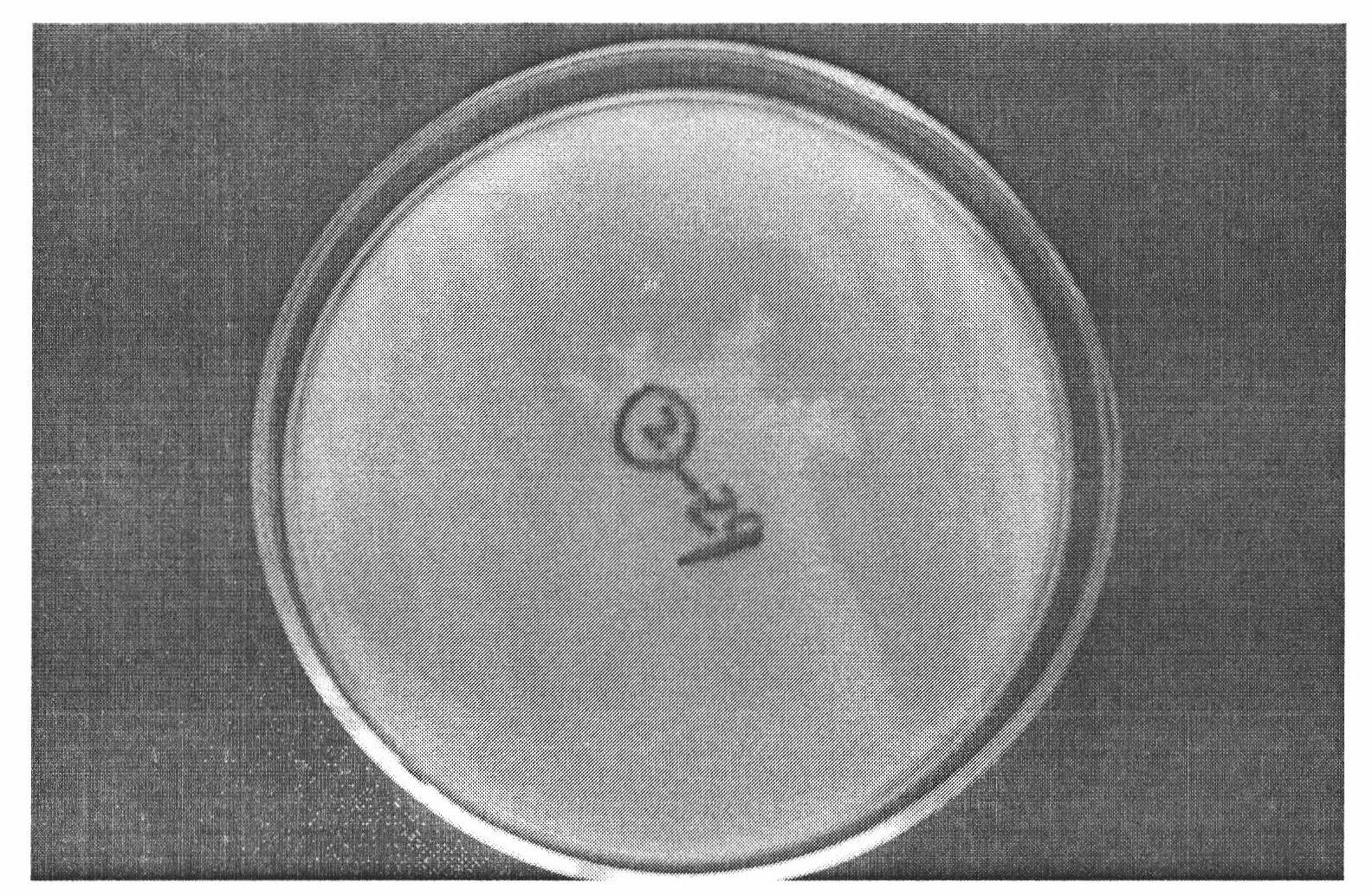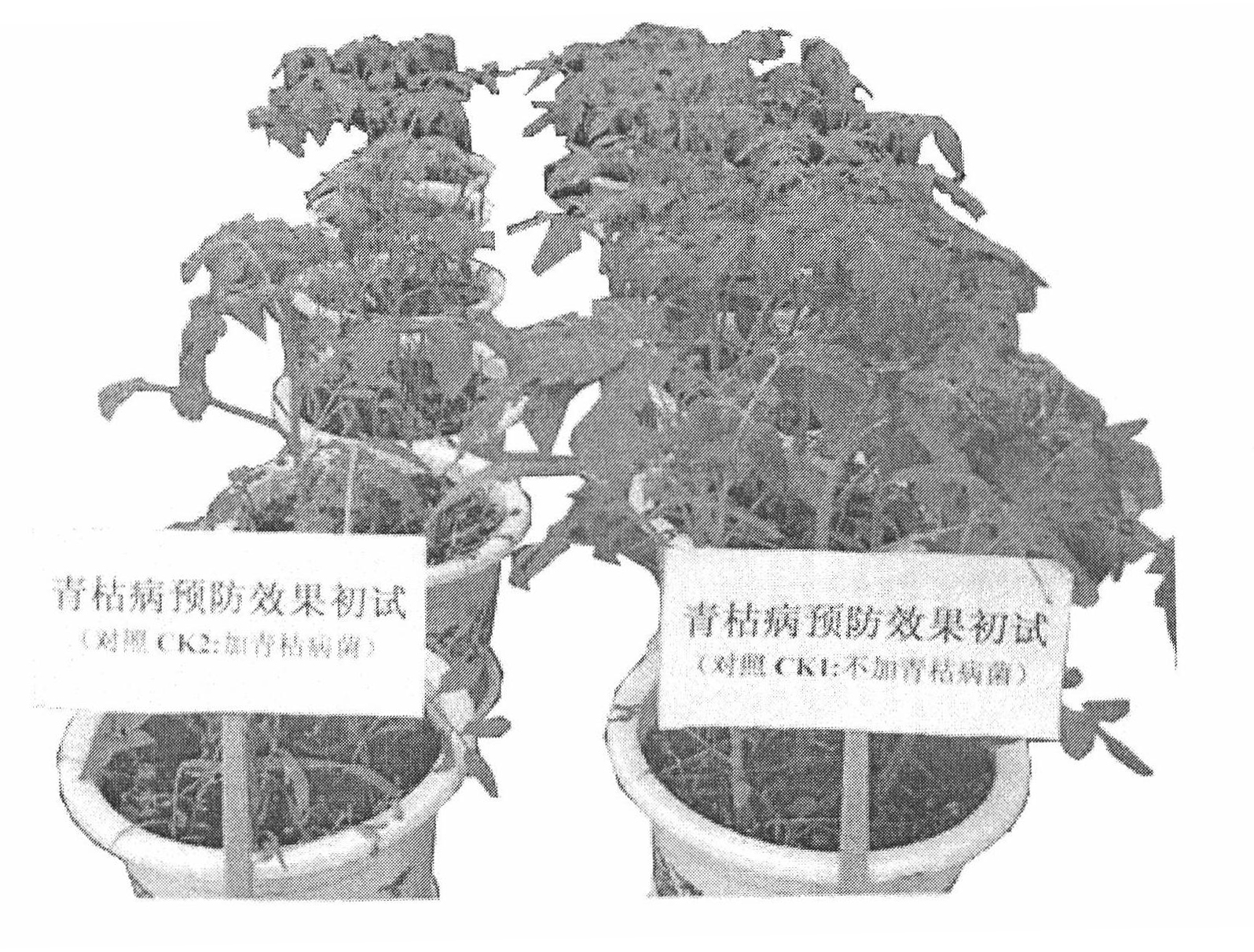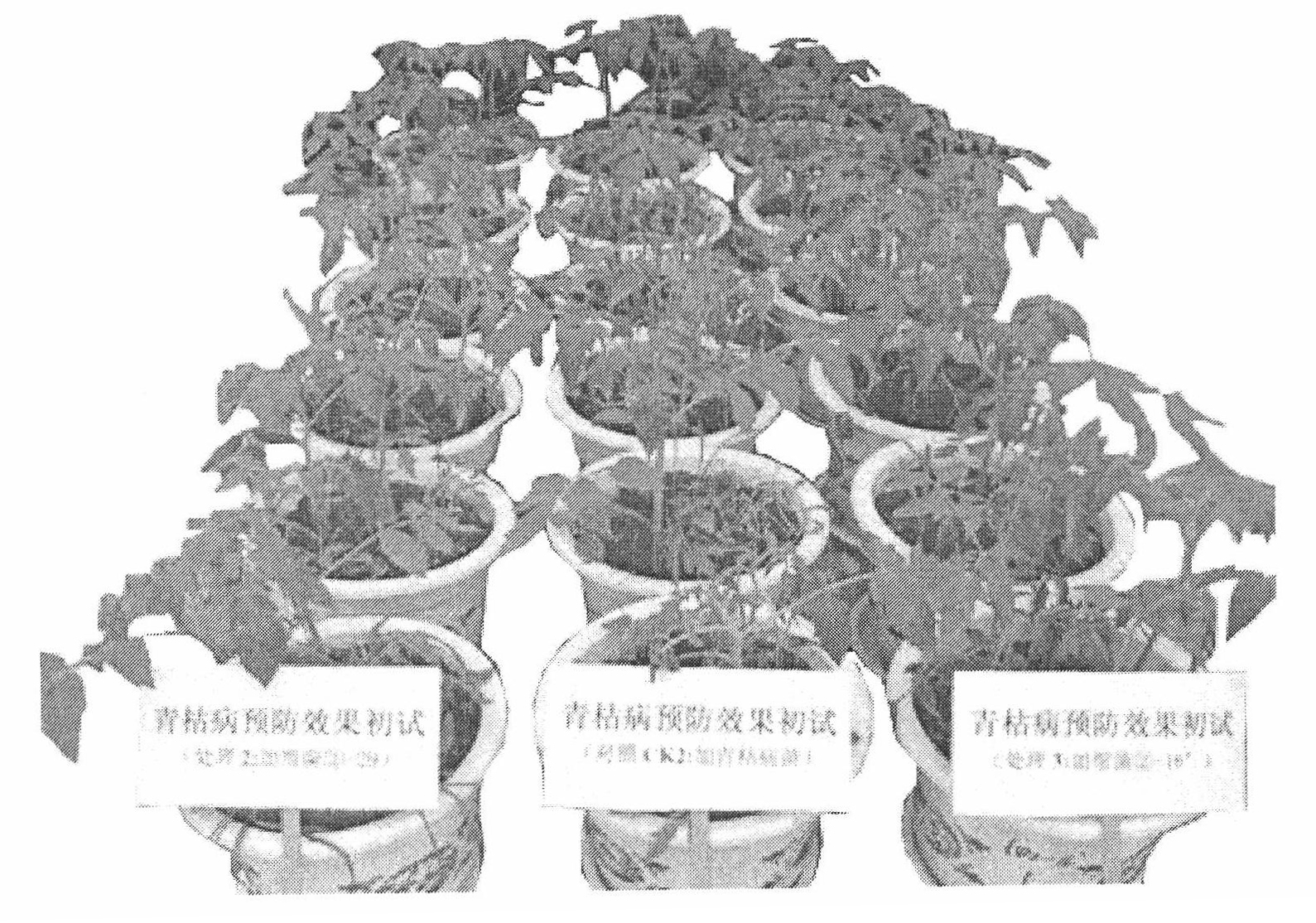Pseudomonas sp. strain and use thereof
A technology of Pseudomonas strains, applied in Pseudomonas strains and its application fields, which can solve the problems of long crop rotation, difficult implementation, and outbreak of pathogenic bacteria
- Summary
- Abstract
- Description
- Claims
- Application Information
AI Technical Summary
Problems solved by technology
Method used
Image
Examples
Embodiment 1
[0030] Embodiment 1: the separation and purification of bacteria
[0031] Bacteria were isolated and purified according to the following test steps:
[0032] 1 medium
[0033] Beef extract peptone agar medium: beef extract 3g, peptone 10g, NaCl 5g, agar 15-20g, H 2 O 1000ml, pH 7.0-7.2. Sterilize at 121.3°C for 20 minutes.
[0034] 2 test steps
[0035] 2.1 Preparation of medium
[0036] Prepare the beef extract peptone agar medium as described in 1 to prepare the bacterial slant medium.
[0037] 2.2 Preparation of soil dilution
[0038] (1). Weigh 10g of soil, add 100ml of sterile water with glass beads into a 500ml Erlenmeyer flask, shake for 15 minutes, that is, 10-1;
[0039] (2). Draw 10ml of soil suspension, add 90ml sterile water to 500ml triangular flask, that is, 10 -2 ;
[0040] (3). Draw 10ml from (2), add 90ml sterile water to 500ml triangular flask, that is, 10 -3 ;
[0041] (4). Draw 5ml from (3), add 45ml sterile water to 250ml triangular flask, that i...
Embodiment 2
[0051] Embodiment 2: Plate antagonism test of isolated bacteria to R. solanacearum of tomato bacterial wilt
[0052] 1. Medium
[0053] 1.1 Solid medium
[0054] Culture medium preparation for R. solanacearum: MgSO 4 7H 2 O0.3g, K 2 HPO 4 2.0g, Yeast extract (yeast extract) 4.0g, Casein hydrolysate (Luo protein hydrolyzate) 8.0g, Sucrose (sucrose) 10.0g, Agar (agar) 18g, Distilled water (distilled water) 1000ml.
[0055] Preparation of beef extract peptone agar medium: same as 1 in Example 1.
[0056] 1.2 Liquid medium
[0057] Bacterial liquid shake flask medium: beef extract peptone medium without adding agar.
[0058] Liquid shake flask culture medium for R. solanacearum of tomato: the culture medium for R. solanacearum does not need to add agar.
[0059] 2. Test steps
[0060] 2.1 Culture medium preparation
[0061] Prepare Ralstonia solanacearum medium (solid, liquid) to prepare the slant of the pathogen Larsia solanacearum; prepare beef extract peptone agar mediu...
Embodiment 3
[0074] Example 3: Biocontrol effect test of strain ②-29 fermented liquid on tomato bacterial wilt in potted plants In order to test the biocontrol effect of strain ②-29, this test was carried out.
[0075] Experimental steps:
[0076] 1. Seedling cultivation
[0077] 1.1 Preparation of seedling substrate
[0078] The substrate for raising seedlings is: peat: vermiculite: perlite = 7:1:0.5, then use tap water to adjust the water content to 60% to 70%, and set aside.
[0079] 1.2 Sowing
[0080] Put about three-quarters of the 1.1 prepared matrix in each hole of the seedling tray (90×60 size), press lightly with your hands, then sprinkle 50 tomato seeds evenly in each hole, and then spread a thin layer of Substrate, and cover the tray with a plastic bag to prevent water from evaporating, set aside.
[0081] 1.3 Emergence
[0082] Put the sowing trays prepared in 1.2 into an artificial climate box for cultivation at a temperature of 25°C, put in a large basin of water to moi...
PUM
 Login to View More
Login to View More Abstract
Description
Claims
Application Information
 Login to View More
Login to View More - R&D
- Intellectual Property
- Life Sciences
- Materials
- Tech Scout
- Unparalleled Data Quality
- Higher Quality Content
- 60% Fewer Hallucinations
Browse by: Latest US Patents, China's latest patents, Technical Efficacy Thesaurus, Application Domain, Technology Topic, Popular Technical Reports.
© 2025 PatSnap. All rights reserved.Legal|Privacy policy|Modern Slavery Act Transparency Statement|Sitemap|About US| Contact US: help@patsnap.com



